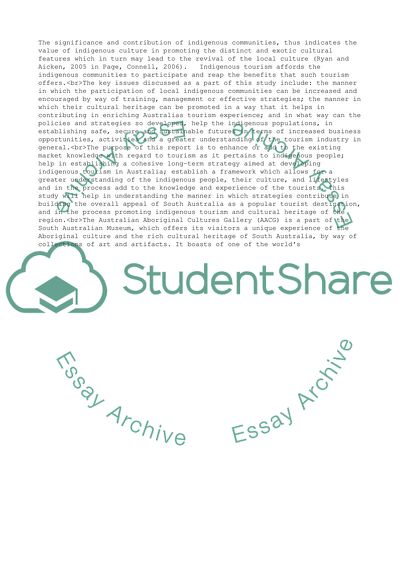Cite this document
(“Tourism and Indigenous Peoples Case Study Example | Topics and Well Written Essays - 1000 words”, n.d.)
Tourism and Indigenous Peoples Case Study Example | Topics and Well Written Essays - 1000 words. Retrieved from https://studentshare.org/management/1579538-tourism-and-indigenous-peoples
Tourism and Indigenous Peoples Case Study Example | Topics and Well Written Essays - 1000 words. Retrieved from https://studentshare.org/management/1579538-tourism-and-indigenous-peoples
(Tourism and Indigenous Peoples Case Study Example | Topics and Well Written Essays - 1000 Words)
Tourism and Indigenous Peoples Case Study Example | Topics and Well Written Essays - 1000 Words. https://studentshare.org/management/1579538-tourism-and-indigenous-peoples.
Tourism and Indigenous Peoples Case Study Example | Topics and Well Written Essays - 1000 Words. https://studentshare.org/management/1579538-tourism-and-indigenous-peoples.
“Tourism and Indigenous Peoples Case Study Example | Topics and Well Written Essays - 1000 Words”, n.d. https://studentshare.org/management/1579538-tourism-and-indigenous-peoples.


